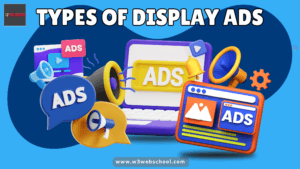Book Free Digital Marketing Demo Class
Table of Contents
Why Investors Care About Market Size (and How to Show It)

Your business idea and team are only part of the story when you pitch to investors.
A clear and accurate estimate of the market size shows that your business can grow and gives investors confidence that they could make a lot of money with their money.
In this article, we’ll talk about why the size of the market is so important to investors, what numbers they want to see (TAM, SAM, SOM), and how you can use these numbers to make your pitch deck better.
People who invest put their money into companies that could make them a lot of money. The size of the market is one of the clearest signs of that potential. You won’t be able to make as much money if the market you want to reach is too small, and it will be harder to sell your business for a profit.
A well-researched market size estimate helps investors to:
- Assess scalability. They want to know that your business is not only possible but that it could also become a big player. A big addressable market means that there are enough chances to grow over time.
- Evaluate risk. Investors can use the size of the market to see if your company can get enough shares to make their investment worth it. If your idea is in a niche or shrinking market, it may not work out.
- Forecast returns. Investors can assess their potential earnings, pricing, and worth by analyzing the market size. The more likely it is, the more you can win.
- Understand competitive dynamics. You can also use market size data to find out how many people want to enter the market and if a new business can be successful.
For early-stage startups, the right market size can be the difference between securing a meeting and being overlooked. Experienced investors may also consider market size when deciding which mergers, acquisitions, and funding rounds to participate in.
The Key Market Size Metrics Investors Expect
When investors want to know how big the market is, they usually want more than just one big number. When you break down the market like this, investors will see that you know your industry, your target audience, and how you can realistically grow.
Usually, they want you to break it down into three key metrics: TAM, SAM, and SOM.
Total Addressable Market (TAM)
The Total Addressable Market (TAM) is the most money your product or service could make if you had every customer. It is the most general measure and tells investors how far your business could go.
For example, if you’re building a new email marketing platform, your TAM could be all the tools that people use to market through email. For detailed methodologies on how to calculate TAM, including top-down and bottom-up approaches, there are comprehensive resources available.
Serviceable Available Market (SAM)
The Serviceable Available Market (SAM) is the part of the Total Addressable Market (TAM) that your business can actually go after. It depends on things like where you are, who your customers are, and what your products do.
For example, if you only work with small and medium-sized businesses in North America, your SAM would not include big businesses or customers from other countries.
Serviceable Obtainable Market (SOM)
The Serviceable Obtainable Market (SOM) is a slice of the SAM that you can realistically capture in the short term, given your resources and competitive position.
For example, your SOM represents the portion of your SAM that you believe you can capture, which is estimated to be 5% within three years.
How to Show Your Pitch Deck's Size in the Market
A good market size slide doesn’t just show investors many numbers. It shows them that you know your audience, your market, and how much you can grow.
You need to make these numbers seem real in your pitch deck. Investors want more than just numbers; they want to see a story that makes sense and is believable.
Here is the approach you should take:
- Be transparent about how you feel. To enhance your credibility, consider addressing how you determined the market size. This will help you look more trustworthy.
- Use reliable data sources. Use reliable sources like government data, industry experts, or websites like ZoomInfo or CB Insights. Don’t use numbers that you haven’t looked into, because investors will want to know where you got them.
- Show both top-down and bottom-up approaches. You use a top-down approach, starting with a significant number for the market and then going down from there. When you use a bottom-up approach, you guess how much you can sell and how much you can charge to see how much money you could make.
- Make it visual. Graphs, charts, and infographics make it easier to see how big your market is. A clear design can help your presentation stand out, as investors review many decks.
- Connect market size to traction. If you already have paying customers or pilots, show how your current growth compares to what you think your market share is.
Common Mistakes to Avoid
Your pitch will be stronger if you show investors the market size, but mistakes may make them distrust you. You can demonstrate that your market sizing is accurate, well-considered, and prepared for investors if you avoid making these mistakes.
- Inflating the numbers. If you say your TAM is higher than it really is or if you think you can get a market share that isn’t possible, that’s not good. Investors prefer estimates that are conservative and well-reasoned over those that are overly optimistic.
- Using outdated or unreliable data. If you use outdated industry reports or sources that haven’t been verified, it might seem like your business isn’t keeping up with what’s going on.
- Ignoring your competitors. You should also consider how competition influences the size of a market. If you don’t show how your predictions fit into the bigger picture, they are less believable.
- Skipping methodology. If you just give investors a significant number without explaining how you got it, they are less likely to believe you. Get ready to explain how you did it confidently.
Make It Go Big, or Go Home
Investors might say “maybe” or “yes” if you tell them how big the market is.
The size of the market isn’t just a slide in your pitch deck; it’s a big sign of how much your business can grow. Investors use it to figure out how big your business can get, how much money it will make, and whether or not they should put their money into it.
Showing investors clear TAM, SAM, and SOM numbers backed up by reliable data will help you talk to them better and get more money.





